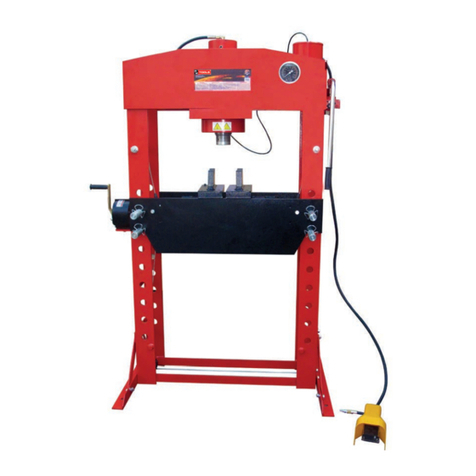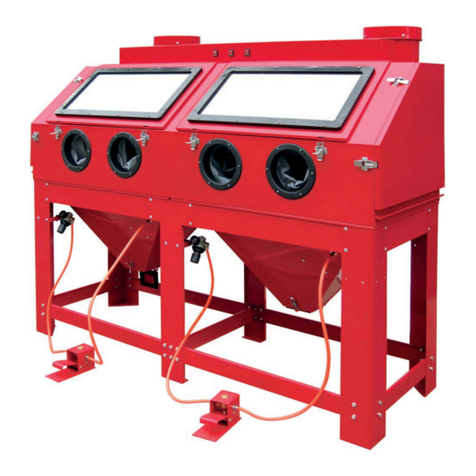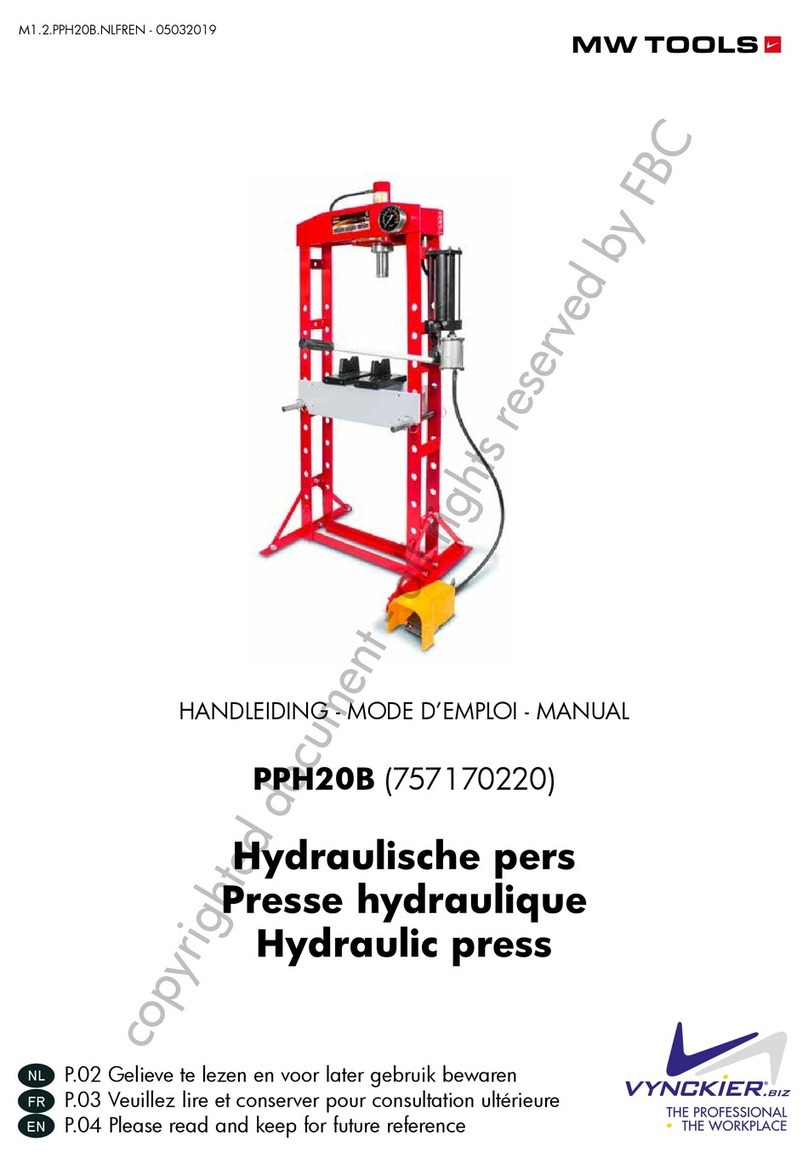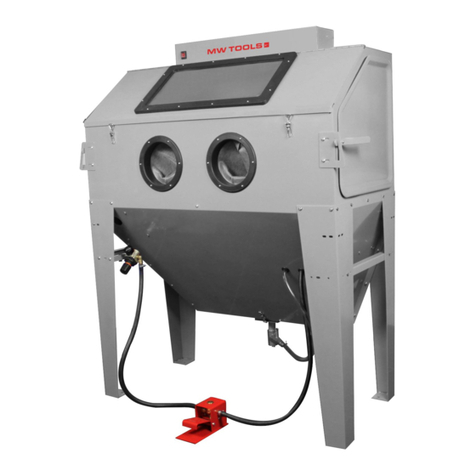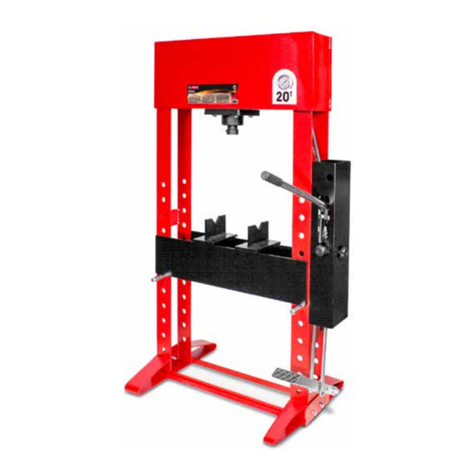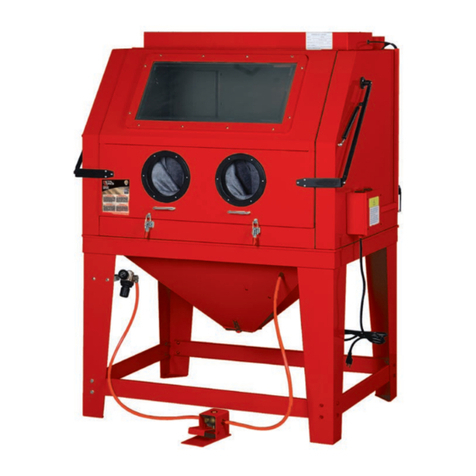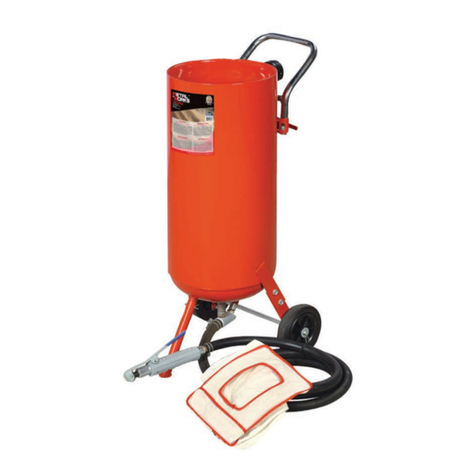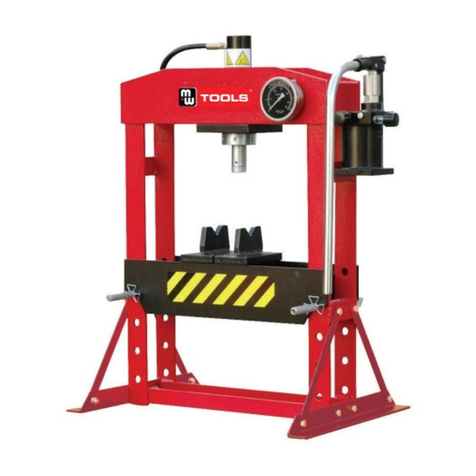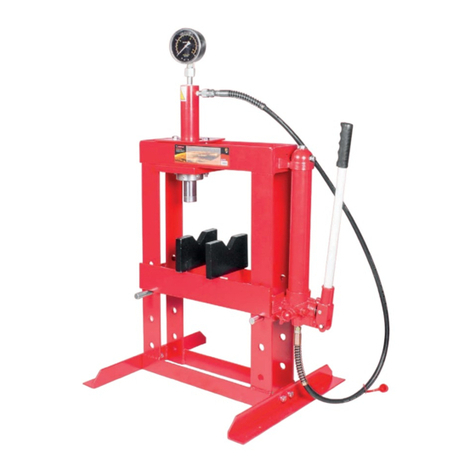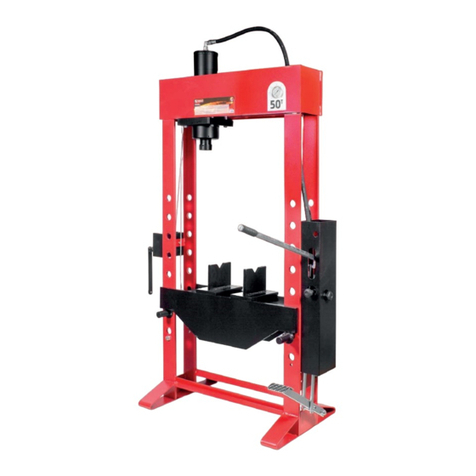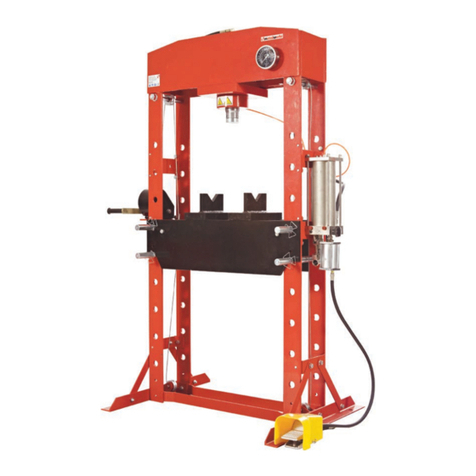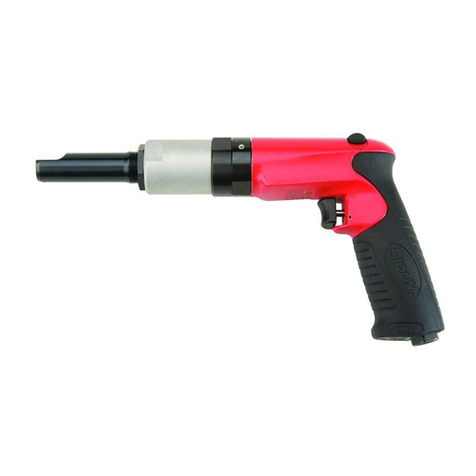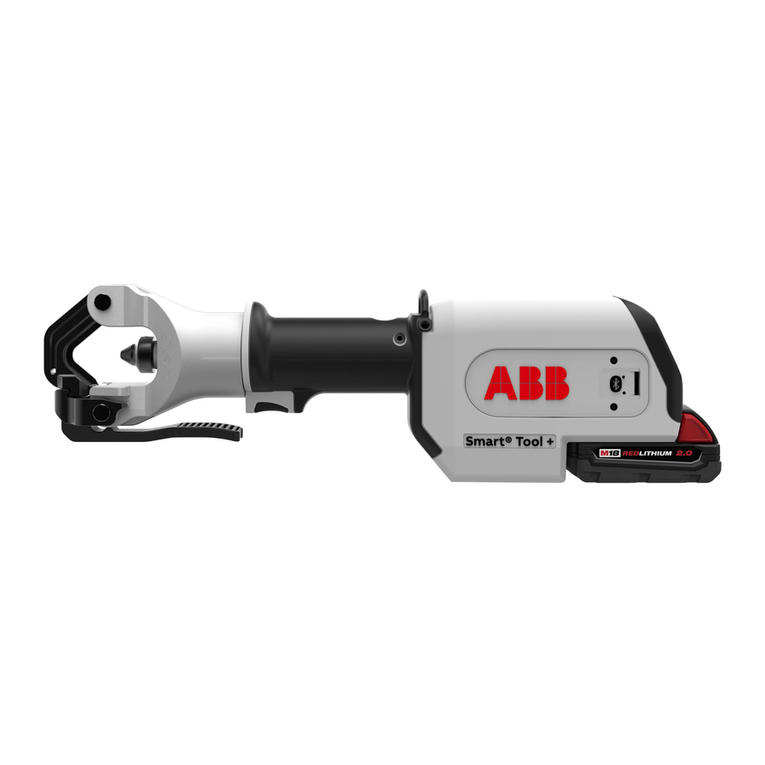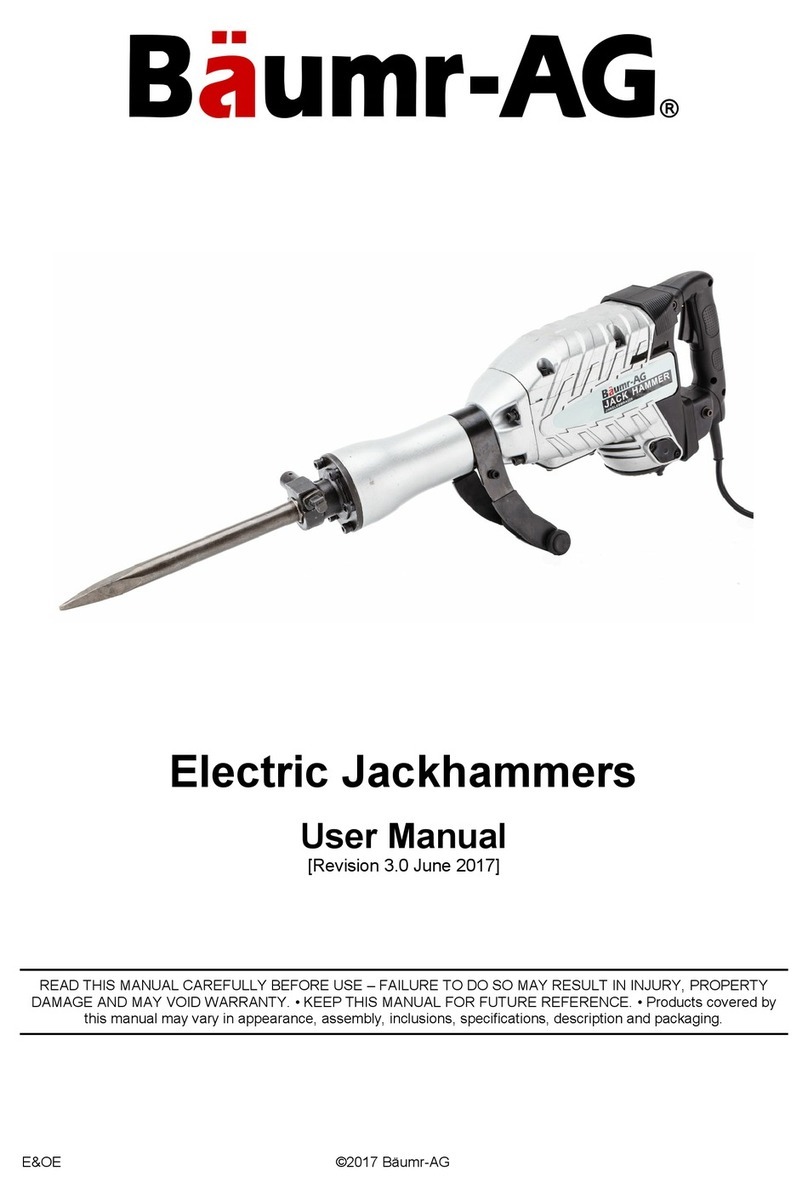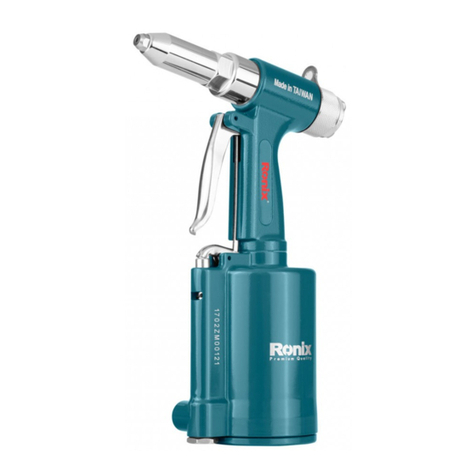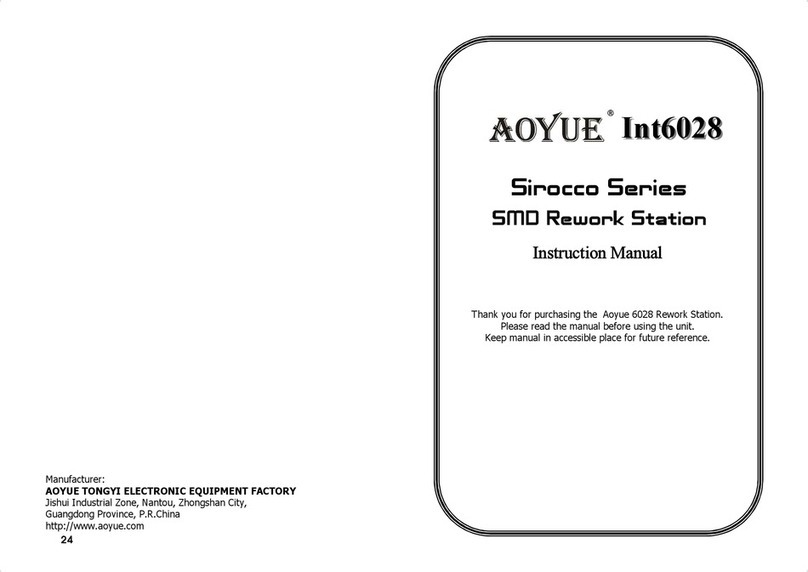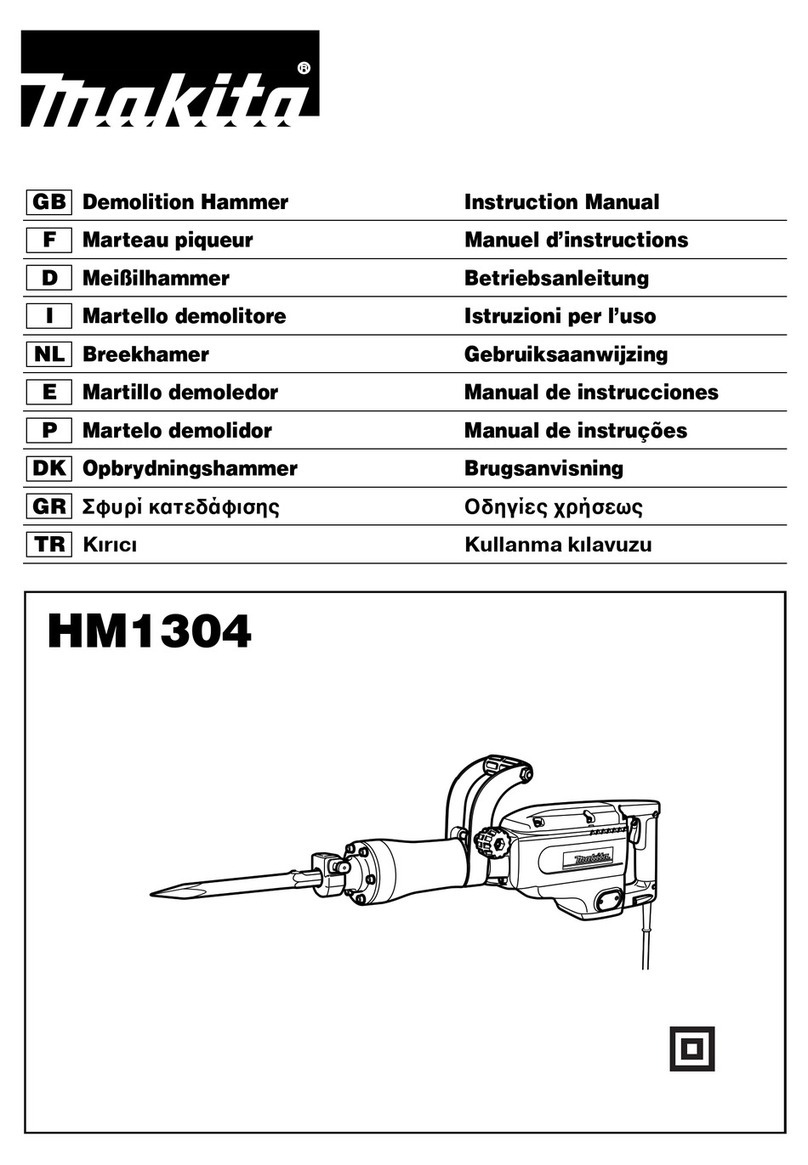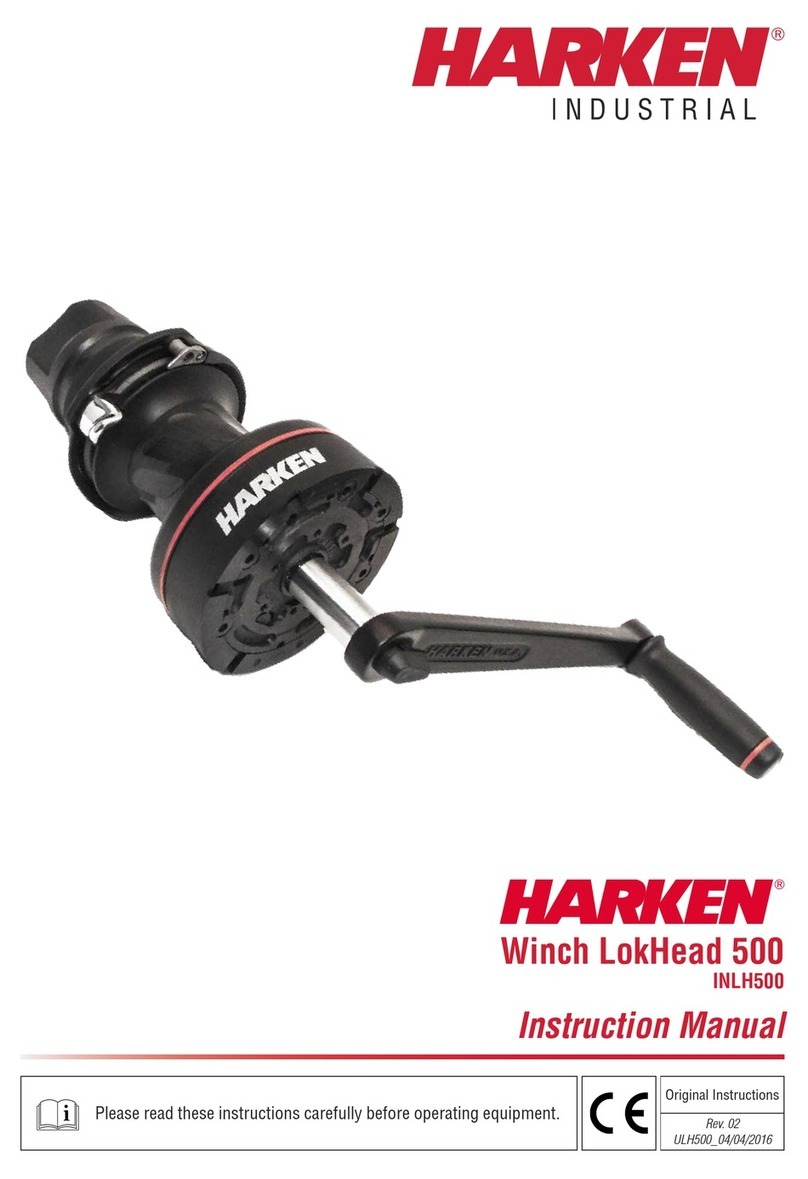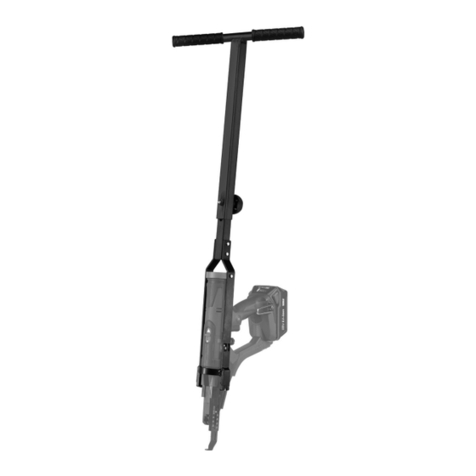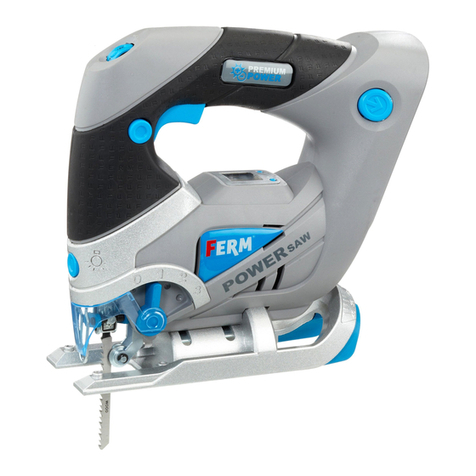
9
M1.1.CAT415.NLFREN 14062018
FR
7 Utilisation
1. Le jet d’air et le suceur doivent être compatibles.
2. Mettez environ 18 kg de matière abrasive dans l’entonnoir par la porte latérale de la cabine.
3. Mettez un ltre sur le collet à l’arrière de la cabine et connectez-le avec l’aspirateur de poussière. Ceci évite l’entrée
de poussière dans le moteur, ce qui pourrait endommager la cabine.
4. Quand la pression d’air du compresseur atteint 4 bars (60 Psi), mettez l’interrupteur du courant sur “ON”. La lampe
témoin s’allume.
5. Cette cabine est livrée avec 2 pistolets de sablage, mais la commande par système électrique-pneumatique ne
permet l’utilisation que d’un pistolet à la fois. Si la lampe témoin du pistolet mobile est allumée, celui-ci est disponible
pour le travail. Pendant que le témoin “portes fermées” est allumé, poussez la pédale. Le pistolet xe va tout de suite
commencer à sabler. Le témoin du pistolet mobile s’éteint en même temps.
6. Il y a une sonde sur les portes qui indique si elles sont ouvertes ou fermées. Si le témoin “portes fermées” est éteint, le
système de commande se met en sécurité, et le pistolet xe ne marchera pas, même si la pédale est actionnée.
7. Si la pression d’air est supérieure à 4 bars (60 Psi), l’utilisateur peut commencer un test. Mettez les mains dans les
gants, tenez la pièce à sabler, mettez-la sous le pistolet xe, actionnez la pédale et le sablage commence. Vous
pouvez aussi utiliser le pistolet mobile. Observez la surface sablée après un certain temps, pour vérier le résultat.
8. La matière abrasive va tomber au bas de l’entonnoir après le sablage et peut être utilisée à nouveau.
Note: L’air sous pression doit être sec. S’il y a trop d’humidité, attachez un ltre à eau pour séparer l’humidité avant que
l’air ne rentre dans le boîtier de commande électrique.
8 Éclairage et système électrique-pneumatique
Le système pneumatique est commandé par un circuit électrique, qui se trouve dans le boîtier sur la cabine.
Le panneau du boîtier de commande électrique se présente comme suit :
1 Fusible 2 Témoin lumineux alimentation électrique
3Interrupteur de l’éclairage 4 Interrupteur de l’aspirateur
5 Interrupteur alimentation électrique 6 Témoin lumineux
7Témoin lumineux “portes fermées” 8Témoin lumineux pistolet xe
9Témoin lumineux pistolet mobile 10 Jauge de pression d’air
11 Valve de pression d’air
CAT415 - NLFREN - v1.0.1 - 21042017
4
NL
TOOLS
7 Instructies voor de bediening
1. Luchtspuit en spuitmond moeten in grootte overeenkomen.
2. Giet ongeveer 18 kg schuurmiddel in de trechter via de zijdeur van de cabine.
3. Plaats een lter op de ens aan de zijkant van de cabine en verbind met een stofafzuiging. Dit voorkomt dat stof de motor
binnendringt en de machine beschadigt.
4. Als de luchtdruk van de compressor 4 bar (60 Psi) bereikt, zet de schakelaar dan op “ON”. Het indicatielampje zal
beginnen branden.
5. Deze machine wordt geleverd met twee pistolen, maar met het elektrisch-pneumatisch bedieningssysteem kunnen ze niet
tegelijk gebruikt worden. Als het lampje voor het beweegbare pistool brandt, is dat beschikbaar om mee te werken. Als
het lampje voor “deuren gesloten” brandt, duw op de pedaalschakelaar en het vaste pistool zal onmiddellijk werken. Het
lampje voor het beweegbare pistool gaat dan ook uit.
6. Er is een sensor aangebracht aan de binnenkant van de deur om te controleren of de deur open of dicht is. Als het lampje
“deuren gesloten” niet brandt, zal het vaste pistool niet werken, ongeacht of de pedaalschakelaar ingedrukt wordt of niet.
7. Als de luchtdruk hoger is dan 4 bar (60 Psi) kan er een test gedaan worden. Steek de handen in de rubber handschoenen,
neem het werkstuk vast, breng het in positie onder het vaste pistool, stap op het pedaal en het straalproces begint. U kan
ook met het beweegbare pistool werken. Controleer na een tijdje het effect op het oppervlak van het werkstuk.
8. Het straalmiddel zal na het stralen op de bodem van de trechter vallen en kan opnieuw gebruikt worden.
Noot: De gebruikte lucht moet droog genoeg zijn, gebruik anders een waterlter om het water op te vangen voor het de
elektrische bediening binnengaat.
8 Verlichting en elektrisch-pneumatisch systeem
Het pneumatische systeem wordt door een elektrisch circuit bediend, dat zich in een doos op de cabine bevindt.
Zo ziet het frontpaneel van de elektrische bediening eruit:
1Zekering 2 Stroomschakelaar
3Lichtschakelaar 4 Schakelaar stofafzuiging
5 Controlelampje stroomtoevoer 6 Controlelampje
7Controlelampje “Deuren gesloten” 8 Vast pistool controlelampje
9 Beweegbaar pistool controlelampje 10 Luchtdrukmeter
11 Luchtdrukklep
copyrighted document - all rights reserved by FBC
